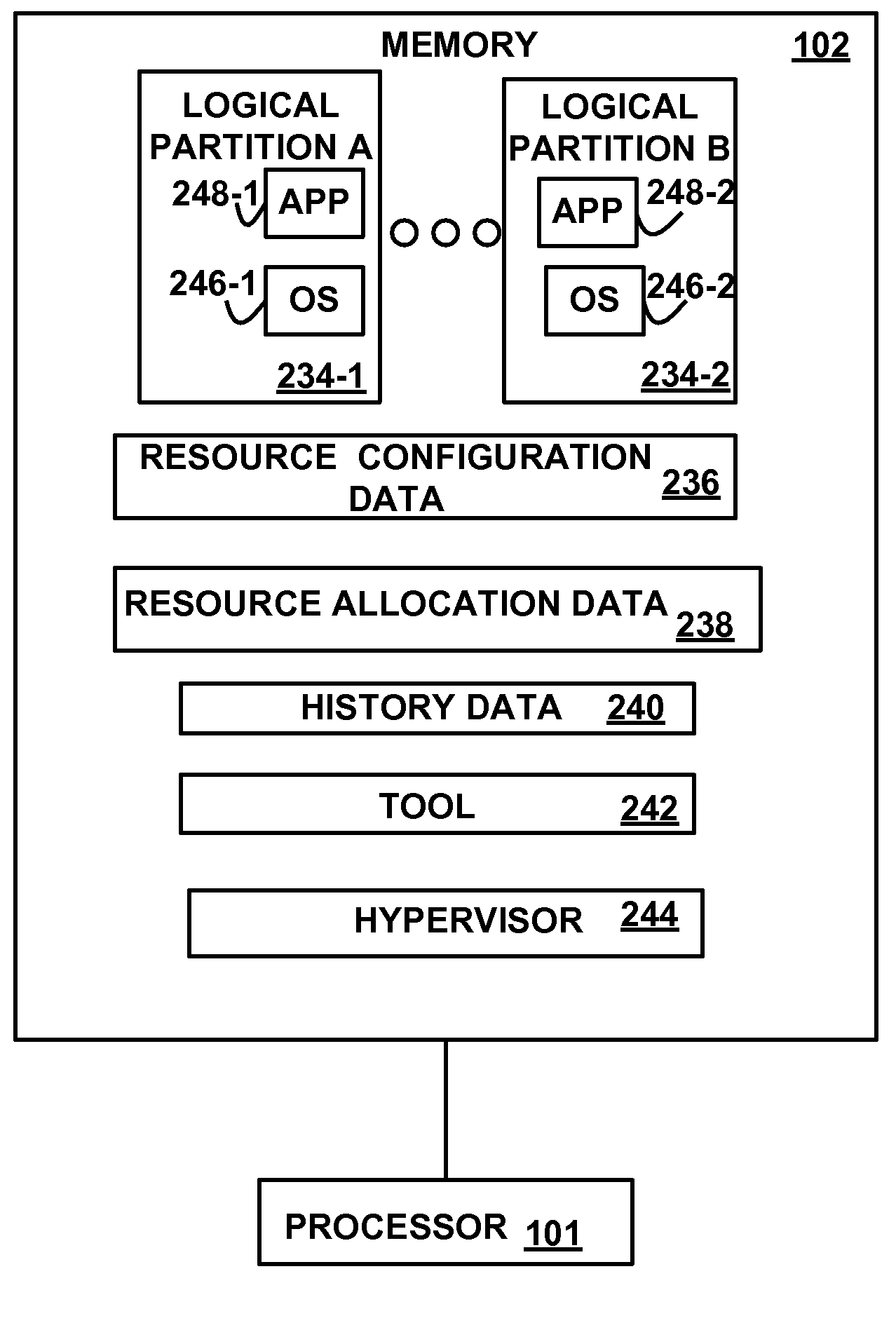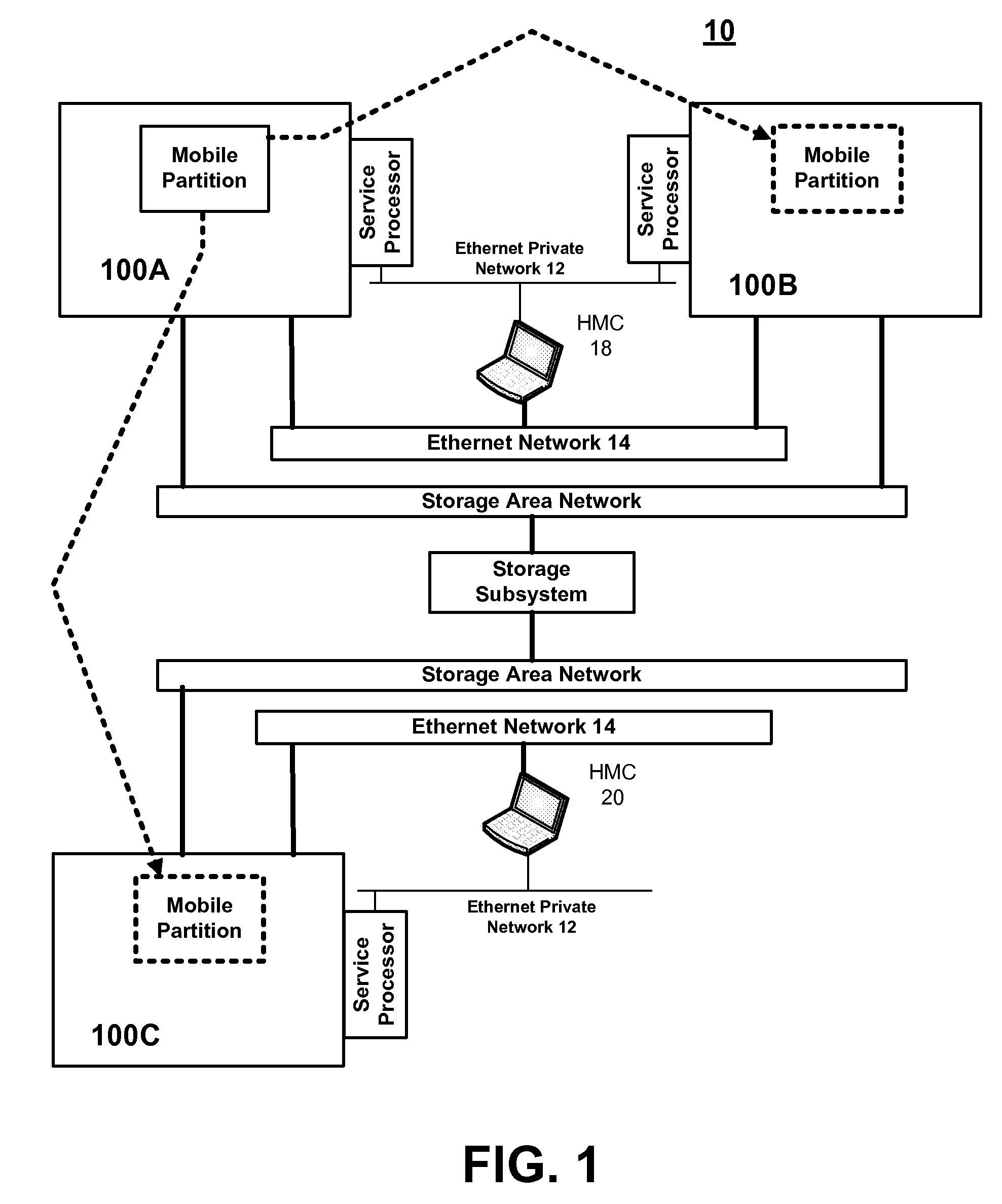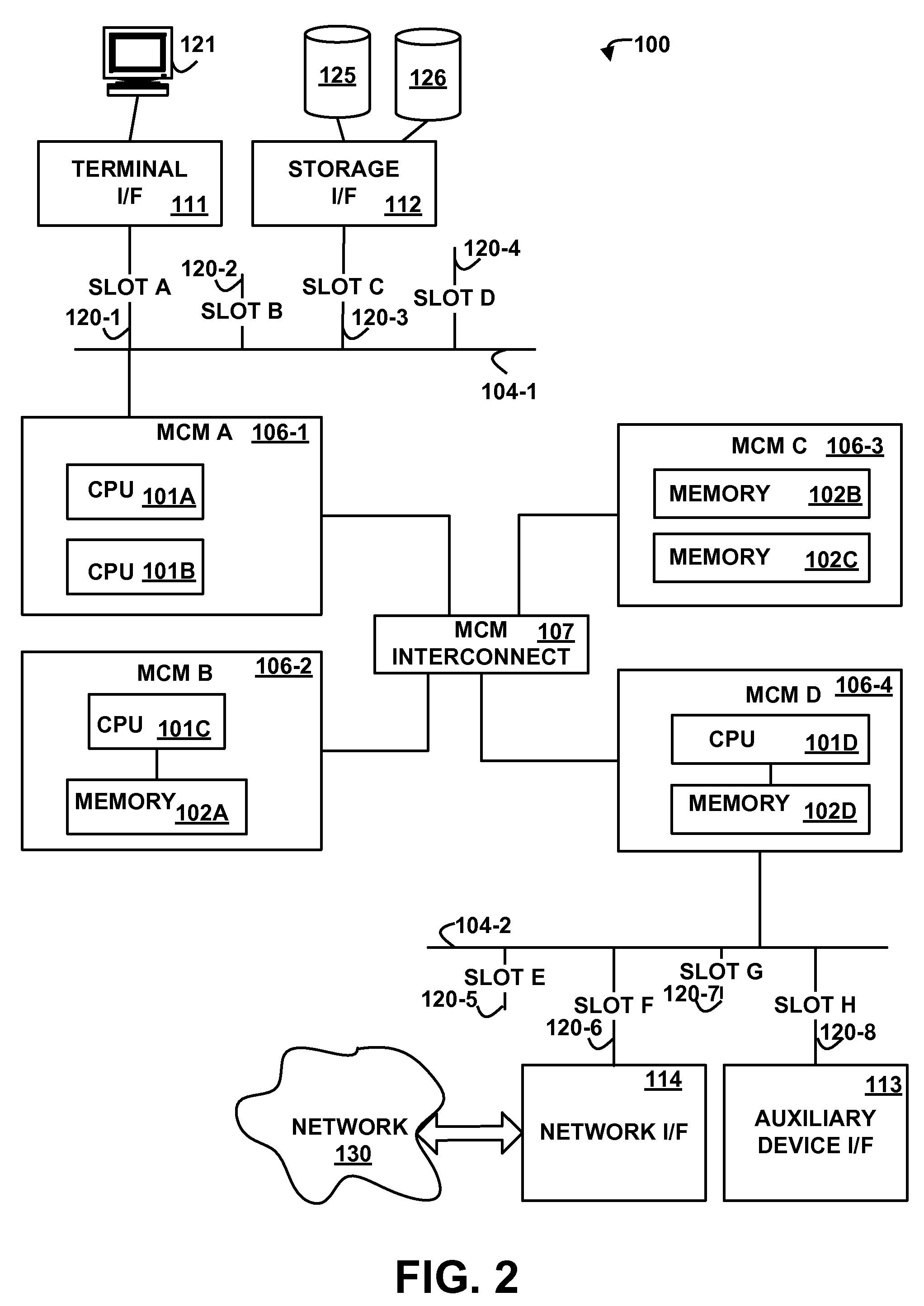Moving Resources In a Computing Environment Having Multiple Logically-Partitioned Computer Systems
a computing environment and resource technology, applied in the field of logically-partitioned computer systems, can solve the problems of current hypervisors not responding well to problems, disadvantageous utilization of computing resources, and inability to use computing resources effectively, so as to achieve higher capacity and higher utilization
- Summary
- Abstract
- Description
- Claims
- Application Information
AI Technical Summary
Benefits of technology
Problems solved by technology
Method used
Image
Examples
second embodiment
[0066]FIG. 4 depicts a block diagram of an example data structure for resource configuration data 236, according to an embodiment of invention. Configuration data 236 may be assembled for each logically-partitioned computer system 100A, 100B, 100C, etc., in the computing environment 10. For example computers systems 100A, 100B, and 100C may have associated configuration data 236-1, 236-2, 236-3 respectively. In a second embodiment configuration data 236 structure is assembled into one large data structure combining data from each logically-partitioned computer system. In this embodiment the data structure would add a CEC, or other logically-partitioned computer system, identifier.
[0067]The source configuration data 236 includes records 305, 310, 315, 320, 325, 330, 335, 340, 345, 350, 355, 360, 365, 370, 375, and 380, each of which includes a resource field 385, a location field 390, and a data path distance field 395. The resource field 385 identifies a resource in for example, com...
first embodiment
[0079]FIG. 7 depicts a block diagram of an example data structure for partition utilization history data 240-2, according to an embodiment of invention. History data 240 (FIG. 3) may be assembled for each logically-partitioned computer system 100A, 100B, 100C, etc., in the computing environment 10. In a first embodiment, the history data 240 structure is assembled into one large data structure combining data from each logically-partitioned computer system. In this embodiment the data structure may add a CEC, or logically-partitioned computer system, identification column. In other embodiments each logically partitioned computer system has a distinct history data structure.
[0080]The history data 240 (FIG. 3) includes the dynamic resource allocation history data 240-2. The dynamic resource allocation history data 240-2 includes example records 605, 610, and 612, each of which includes a resource field 615, a location field 620, a source partition identifier field 625, a destination pa...
PUM
 Login to View More
Login to View More Abstract
Description
Claims
Application Information
 Login to View More
Login to View More - R&D
- Intellectual Property
- Life Sciences
- Materials
- Tech Scout
- Unparalleled Data Quality
- Higher Quality Content
- 60% Fewer Hallucinations
Browse by: Latest US Patents, China's latest patents, Technical Efficacy Thesaurus, Application Domain, Technology Topic, Popular Technical Reports.
© 2025 PatSnap. All rights reserved.Legal|Privacy policy|Modern Slavery Act Transparency Statement|Sitemap|About US| Contact US: help@patsnap.com



